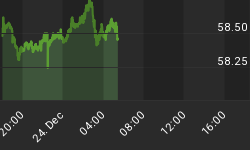The giant merger attempt of Dish and AT&T’S DIRECTV has now celebrated its 18th birthday--in purgatory. While it is mature enough to vote, buy alcohol, drive and whatnot, the marriage still doesn’t have the government’s blessing.
Even though the two companies’ managers keep claiming that the merger is just around the corner, the New York Post is reporting that the Department of Justice told them it “would likely have to wait until faster 5G wireless service is more widely available in rural markets.”
The rollout of 5G technology will improve internet availability in such areas, for sure, but some expect it to take at least a decade to happen. Why? Because rural areas aren’t exactly high on the priority list of providers who will have to spend a ton of money to make that happen for little return in revenue.
“Antitrust regulators remain concerned that a union could lead to higher prices in areas lacking high-speed Internet access, including tribal lands”, the sources told the NYP.
Dish Chairman Charlie Ergen said repeatedly that he believes a merger between Dish and DIRECTV is inevitable, but he has acknowledged that the timetable for a deal is uncertain.
“Yeah, I mean, I still think Dish and DIRECTV will be inevitable. Could that be a month from now or 10 years from now? That I don’t know,” Ergen said.
If the two companies are to actually merge, it would create the country’s No. 1 behemoth among satellite providers, with a combined subscriber base (including Dish-owned Sling TV) of about 30 million.
The two companies had already been barred from merging back in 2002 over concerns of eliminating competition. However, it was expected that antitrust regulators could now approve the merger as the competition has grown stronger and quite a few new players have emerged.
Regardless, a merger still looks messy, especially since DIRECTV is currently owned by AT&T, which made the acquisition five years ago for $49 billion, or $67.1 billion with debt included.
Five years later, AT&T may be regretting the move. Reports emerged in August that AT&T was trying to sell DIRECTV, and that it would potentially be valued at less than $20 billion--a far cry from the $49 billion AT&T paid for it in 2015.
And the trouble keeps piling up.
Currently, Hulu is officially the top live TV streaming service, overtaking Sling TV for the first time last quarter. Hulu + Live TV continues to grow, finishing the last quarter with a record 3.4 million subscribers.
Dish’s Sling TV service finished Q4 2019 with 2.59 million subscribers, having lost 94,000 subscribers from the prior quarter. In all, Dish lost a net total of 511,000 subscribers in 2019, compared to a loss of about 1.13 million in 2018.
Over the last year, AT&T has lost over 2.3 million TV subscribers. For this year, DIRECTV lost 900,000 subscribers in the first quarter of this year, and another 846,000 in the second quarter.
Almost 2 million American households canceled cable and satellite TV subscriptions in the first quarter of 2020, followed by 5.5 million households who cut the cord last year.
That’s bound to get worse for cable and satellite: Experts say that more Americans will opt out of both in favor of online streaming services.
Projections are that 76 million households are expected to cut the cable cord by 2023 as streaming gets a pandemic and lockdown boost.
As far as the consumers are concerned, mergers are rarely to their benefit. Following the $85 billion merger between AT&T and Time Warner, customers saw subscription prices increase three times. The first increase happened just two weeks after the merger. Just in the last seven months, subscribers’ prices went up by 50%.
By Michael Scott for Safehaven.com
More Top Reads From Safehaven.com:
















